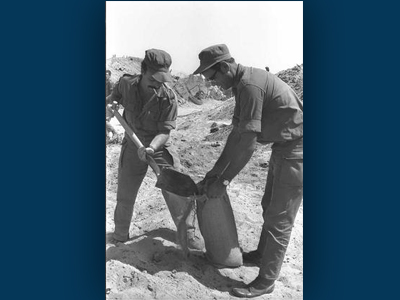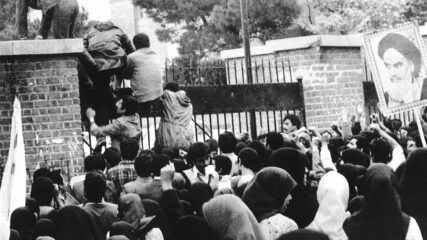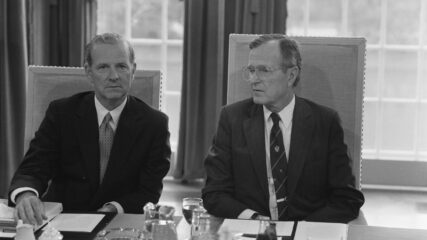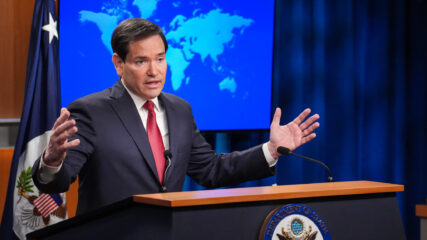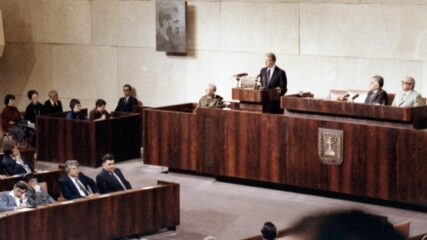March 8, 1969
Egyptian forces launched a major offensive at Israeli positions on the eastern banks of the Suez Canal, starting the War of Attrition that lasted until August 1970. On June 11, 1967, a ceasefire had been reached between Israel and Egypt following the June 1967 Six-Day War. Beginning in October 1968, Egypt began launching commando attacks and shelling Israeli positions along the canal, even sinking an Israeli destroyer off the coast of Sinai. Israel responded with retaliatory raids. As Egyptian attacks increased, Israel constructed a defense fortification along the canal known as the Bar-Lev Line, a string of thirty-five forts along the 100-plus mile long canal, named for Israel’s Chief of Staff General Chaim Bar-Lev.
The photo shows Israeli soldiers filling a sandbag for use as part of the fortifications along the Bar-Lev Line in 1970.
On February 16, 1969, Egyptian President Gamel Abdel Nasser told his government ministers that by launching an escalated war of attrition against Israeli positions in Sinai, Egypt could put a strain on Israel’s military capability. Nasser also believed that if Israel were forced to station its reserve forces in Sinai for prolonged periods of time, the War of Attrition could also negatively impact the Israeli economy. Nasser believed that these limited goals could influence the United States to rethink its Middle East policy, especially with President Richard Nixon having just taken office. Nasser wanted Nixon to pressure Israel into negotiating for a peace that was favorable to Egypt. Nasser also hoped that the escalation along the canal would boost Egyptian morale which had been badly damaged by the defeat in June 1967.
The hostilities that began on March 8th intensified. Israel responded to the Egyptian attacks with heavy fire, killing Egyptian Chief of Staff General Abdul Munin Riad. Both sides continued the escalation throughout March and April with Israel responding to Egyptian attacks with raids that penetrated deep into Egyptian territory.
Nasser turned toward the Soviet Union for increased military support, which he received in the form of surface to air missiles in early 1970. The United States responded with a plan to bring the fighting and conflict to an end. Prepared by Secretary of State William Rogers, the plan called for virtually full Israeli withdrawal, Egyptian recognition of Israel, freedom of navigation for Israeli ships and a resolution to the refugee problem. A ceasefire was agreed upon in August 1970, but negotiations did not ensue.

